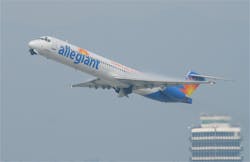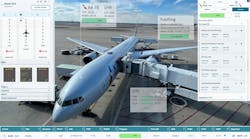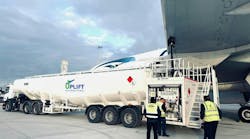Since its inception nearly 20 years ago, Allegiant Air has become a bastion for smaller market airports looking to add some kind of air service to their communities. The carrier started its focus on connecting smaller communities with destinations like Las Vegas and Orlando using a structure to make it as low cost as possible while still profitable.
Allegiant has seen itself grow substantially using this model, however, its focus is going to change in the near future as Jude Bricker, COO/senior vice president of planning for Allegiant Air, said connecting small cities to Vegas and Orlando is a niche the airline has been good at, but it has played itself out.
“It may surprise you unless you’ve been in one of our markets that we’re up to about 350 served markets in 109 cities,” he said. “We serve more cities than Southwest Airlines, though we’re much thinner on peak days.”
Bricker told attendees of the 2016 International Aviation Forecast Summit on Sept. 19, the company has grown by 20 percent annually as it continues to meet the needs of niche markets underserved by airline service. In 80 percent of the airline’s markets, there is no nonstop competition and due to limited service and usage of used planes, it allowed for the company to meet the needs of these markets while keeping prices low.
“We’re in most of the medium markets that we’d like to be in. We still hear from the small communities that want service, for sure. I think that’s going to be the small part of our growth over the next several years,” Bricker told Airport Business staff. “We intend to be there for the small markets, it’s just that it takes more resources on a relative basis to launch into a city than it does to connect the dots and the opportunity that exists immediately ahead of us is building out this midsized city connectivity.”
Bricker said Allegiant considers midsized markets to be areas with more than 1 million in population that fall between the 25th and 75th largest metro areas in the U.S.
“Cincinnati has 15 destinations. I think there are a dozen other cities that I think we can make look just like that,” he said. “So, we want to be the hometown airline for 30 markets throughout the country.”
On Sept. 21, Allegiant announced it was pulling out of Akron-Canton Airport (CAK) and adding 10 flights to Cleveland Hopkins International Airport (CLE).
Allegiant will start service to Newark Liberty International Airport (EWR) to provide a new destination service within the New York metro area. It has also launched into Baltimore/Washington International Thurgood Marshall Airport (BWI).
“I think what has really surprised me is our ability to grow into those destination markets,” he said. “Destin, Florida has been a really positive surprise in my mind. Jacksonville, Florida, Austin, Texas, New Orleans is doing quite well.”
Allegiant is even holding its own in competitive markets now, Bricker said, such as its service from Austin Bergstrom International Airport (AUS) to McCarren International Airport (LAS). The route was already served twice weekly by Southwest and Frontier Airlines, but because Allegiant is only running planes from AUS on peak days, they’re competing with the other two airlines and putting them in a position where there’s no rational response to respond.
“I think we’re trying to do three things better than anyone else — costs, tactical application and capacity, and managing old assets,” Bricker said. “And that’s what we want to be best at and I think we’re pretty good at most of those.”
Allegiant needs to replace its fleet of MD80s due to a lack of ability to get parts for them and sensitivity to fuel prices. The 757s it uses to service its Hawaii routes also need extensive work that and may need to be retires in the near future.
The company is aiming to buy used Airbus 320’s as part of the replacement and the company is purchasing new 320s from Airbus, which will start to arrive in May. The first 10 will be delivered by the end of 2017.
“The point of this is flexibility of capacity is core at what we do and what we intend to maintain,” he said.
Allegiant has been willing to try out markets lacking air service since its inception and Bricker said the system has been pretty successful with only a handful of markets getting pulled in the past couple of years.
Bricker said the airline will still be willing to listen when people ask them to service their community.
“We’re not going to have the extra aircraft we had to play with as we did in the past,” Bricker said. “We’re always interested in talking to cities about if it will work. The key has always been you have to get the cost structure down over the long term.”




